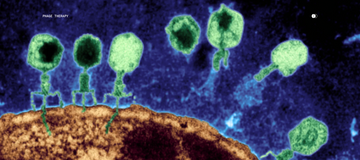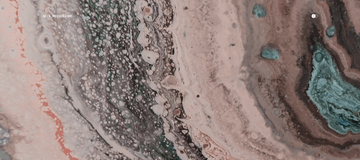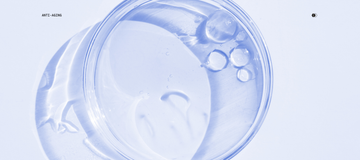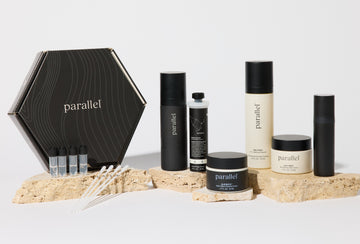We like things that smell good. There’s nothing more amazing than stepping into a eucalyptus-scented spa, walking past a bakery displaying cookies fresh out of the oven, or getting close to someone to whom you’re attracted, perhaps smelling their fragrance or natural scent.
Just as importantly, our sense of smell has evolved as a mechanism to enable survival – to alert ourselves of something dangerous, to make sure we’re not eating rotten food, and even to find the right mate (we’re attracted to certain pheremones and not others!). So when we smell something off (especially if it’s coming from us), we need to pay attention.
Enter: body odor. Body odor can be a minor annoyance when it happens once in a while to you or your partner, or it can be an ongoing problem indicative of a more serious health issue. So let’s talk about the main players here.

What causes the stink?
Sweat correlated with a bad odor is generally produced by sweat glands particularly in the armpits, groin, and feet. The interplay of hormones after the onset of puberty leads to increased activity of these sweat glands. The problem does not lie in the sweat itself, but actually, the specific bacteria unique to your skin microbiome, along with triggering food substances, may cause your sweat to have an unpleasant odor. Sweat itself includes fatty acids, lactic acid, amino acids, and glycerol along with water and electrolytes, which can be influenced by the foods you eat. When your sweat mixes with certain types of bacteria, certain chemicals can be degraded, leading to the production of odorous substances in sweat gland secretions.
Three culprit bacteria:
(read this section below if you want to nerd out a little bit. If not, skip to the foods section!
BTW - we’ve found these bacteria in our skin microbiome on people across the US. If you have an overgrowth of any of these types of bacteria, you may be more inclined to have body odor):
Staphylococcus hominis
Staphylococcus hominis is part of the axillary microbiome. This bacteria contains a gene that encodes for a specific enzyme known as C-S β-lyase. This enzyme breaks down the sweat constituents into a chemical called thioalcohol. Thioalcohol imparts a characteristic pungent odor to axillary sweat and may cause you to feel discomfort. The production of thioalcohol by S. hominis is proportional to the amount of sweat secreted by the salivary glands. Even though thioalcohol is only present in trace amounts, this chemical is the most pungent volatile odorant that causes body odor. Among the four thioalcohols found in axillary sweat, 3-methyl-3-sulfanylhexan-1-ol (3M3SH) makes up the greatest percentage.
Corynebacterium species
Corynebacterium species are lipophilic aerobic microorganisms that are known for producing sulfur odorants. The bacteria employ enzymes including sterol hydrogenase, reductase, steroid isomerase, and hydroxylases to convert non-odorous steroid precursors into odorous steroid derivatives. Branch short-chain fatty acids also play an important role in causing body odor. These fatty acids are conjugated with glutamine residues. The conjugated products are cleaved by a class of enzymes called aminocyclases that are encoded in the genome of Corynebacterium species. The lipids present in the skin are cleaved by lipases of Corynebacterium species and yield volatile short-chain fatty acids as well as sulfanylalkanols that are also responsible for imparting odor to the sweat gland secretions.
Staphylococcus epidermidis
Staphylococcus epidermidis is enriched in genes that encode essential proteins and enzymes important in pyruvate and branched-chain amino acid metabolic reactions. Pyruvate is formed from the redox reactions of lactic acid and glycerol. Pyruvate is converted to Acetyl CoA which later forms acetic acid. Branched-chain amino acids include valine, leucine, and isoleucine. These amino acids undergo a series of reactions catalyzed by acetolactate synthase and branched-chain amino acid transaminase to produce isovaleric acid. Both acetic acid and isovaleric acid cause malodor in the neck and armpit regions.
Foods that can make you stinkier than usual:
Meat
Excessive consumption of different sorts of meat including pork, beef, and lamb, increases the amount of methionine in the body. If you are genetically deficient in an enzyme called methionine adenosyltransferase, you are more susceptible to body odor caused by the excessive accumulation of methionine and its metabolites. The main substance responsible for body odor in hypermethioninemia is dimethyl sulfide.
Seafood
Seafood and other foods including eggs, legumes, and liver contain higher levels of a chemical known as trimethylamine. Excessive accumulation of trimethylamine is excreted from the surface of the skin and along with sweat gland secretions. The combination of sweat and trimethylamine gives rise to a characteristic fishy odor. However, you should know that not everyone develops body odor upon consuming seafood. People who lack a critical enzyme involved in trimethylamine metabolism, flavin-containing monooxygenase (FMO3), suffer from this kind of body odor despite good personal hygiene. If you are experiencing a similar body odor, you should abstain from seafood and other trimethylamine-containing food items.
Onion and Garlic
I think we can all agree that eating onion and garlic should be avoided on first dates, especially since they give rise to bad breath. But not only do these sulfur-containing plants cause bad breath, they also give rise to unpleasant body odor. Onion and garlic contain volatile sulfur compounds including ethanethiol, S-ethyl thioacetate, diethyl sulfide, and dimethyl sulfide. When combined with sweat gland secretions, predominantly in the axillary region, the sulfuric acid gives rise to onion-like body odor.
The key to smelling fresh
Everyone has bacteria on their bodies – even those associated with body odor. It’s normal. However, when there is an overgrowth of these bacteria and/or an ingestion of certain foods mixed with these bacteria, then a body odor issue may arise. If you’re smelling a little off lately, keep your skin microbiome in balance by using the right microbiome products for you. Parallel will be releasing a skin microbiome test kit in 2022 that enables you to discover whether you have an overgrowth of odorous bacteria, but before that, you can also switch your deodorant if it’s not working. Sometimes antiperspirant works really well, but because it works by blocking your sweat glands and drying out your armpits, sometimes it shifts your microbiome towards stinkier bacteria and makes the odor worse. On the other hand, sometimes deodorants that don’t block your sweat glands aren’t very effective either, so it may take some trial-and-error to find what works best for you. Additionally, make sure you’re eating a fresh, healthy diet and try to hold the meat, seafood, and onion/garlic to see if that helps!
Have questions about body odor? Reach out to us at hello@parallelhealth.io.
—------------
Want to discover your skin microbiome? Sign up here to share about your skin journey and be kept apprised of skin microbiome research opportunities and personalized products.
About Parallel
A parallel world lives amongst us: the microbial world. This world impacts not only our lifespan, but also our healthspan.
Our mission is to empower people with real science to make meaningful decisions to improve their healthspan.
Parallel is a clean, science-based skin microbiome health company providing effective, personalized skincare, powered by genomics.
Barzantny, H., I. Brune, and A. Tauch. "Molecular Basis of Human Body Odour Formation: Insights Deduced from Corynebacterial Genome Sequences." International Journal of Cosmetic Science 34.1 (2012): 2-11. Print.
Lam, T. H., et al. "Understanding the Microbial Basis of Body Odor in Pre-Pubescent Children and Teenagers." Microbiome 6.1 (2018): 213. Print.
Mogilnicka, I., P. Bogucki, and M. Ufnal. "Microbiota and Malodor-Etiology and Management." Int J Mol Sci 21.8 (2020). Print.
Rudden, Michelle, et al. "The Molecular Basis of Thioalcohol Production in Human Body Odour." Scientific Reports 10.1 (2020): 12500. Print.
Callewaert, C., Hutapea, P., Van de Wiele, T., & Boon, N. (2014). Deodorants and antiperspirants affect the axillary bacterial community. Archives of dermatological research, 306(8), 701-710.
Urban, J., Fergus, D. J., Savage, A. M., Ehlers, M., Menninger, H. L., Dunn, R. R., & Horvath, J. E. (2016). The effect of habitual and experimental antiperspirant and deodorant product use on the armpit microbiome. PeerJ, 4, e1605.




























